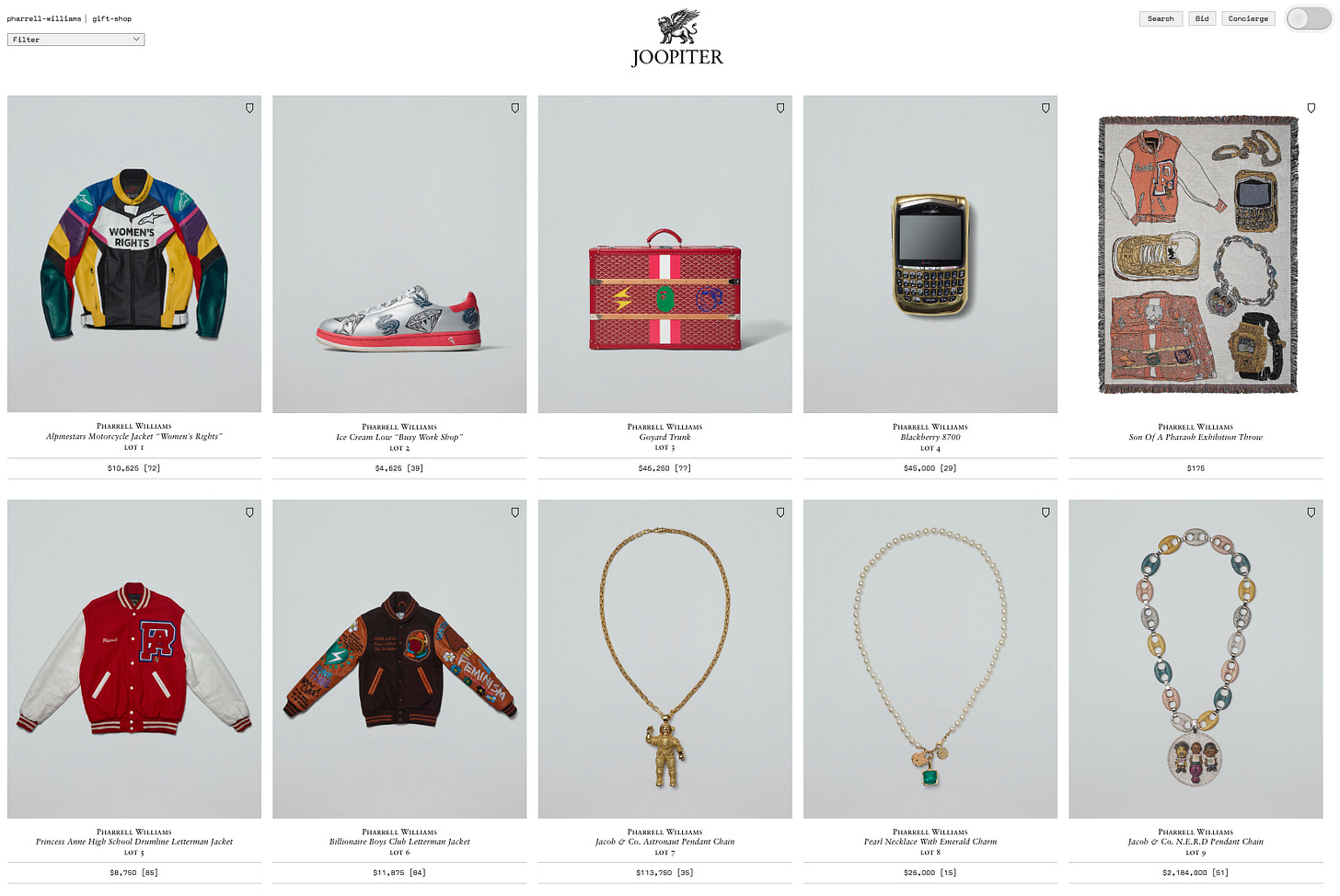Welcome to the Sociology of Business. The Sociology of Business offers a paid membership program. Paid options are for the members of this community who want to be the first to access everything from Web3 brand-building to the new business models and emerging creative formats. Since its inception, the Sociology of Business has been the source code for many other analyses, strategies and brand-building approaches. Members will now have the front-row seat. If you are not yet subscribed, join the community by subscribing below and joining the Sociology of Business Discord. You can find my book, The Business of Aspiration on Amazon and you can find me on Instagram and Twitter. For those new here, in my last analysis, Winning in second-hand markets, I looked into three strategic pillars that define value of a second hand market: aesthetics, status and identity.
Collecting is the primary economic activity in aspirational markets. Aspirational markets are based less on the production of new objects and more on connecting things, experiences and places that already exist into collections.
A collection is a narrative that drives items’ desirability beyond their commercial value. Symbolic value of items in a collection is amplified through their associations with stories, histories, brands and personalities. A pair of Adidas that belong to Pharrell’s collection are more valuable than the same pair sold by an anonymous seller on Grailed. Pharrell’s sneaker collection reflects Pharrell’s taste, creative identity and curatorial sensibility and this gives all the items in this collection an aura and halo of Pharrell’s cultural influence.
Through cultural associations, collections accumulate social and economic capital that is used by collectors to convey their status and taste. Supreme is a collection of pretty much anything, from a t-shirt to a branded brick to Tiffany&Co heart bracelet, held together by Supreme’s urban neighborhood aesthetic shaped by the tight-knit community of skaters and DJs and hype beasts. Supreme’s story links its products to culture, removes them from their initial use and converts them into parts of a collection. This collection is self-perpetuating: Supreme various collaborations exert externalities on one another and on the Supreme universe. Once it’s part of the collection, a Supreme item accrues capital in context of its secondary market value. Media, cultural commentators, communities, collectors, critics, dealers and resellers and global brands all contribute to the Supreme narrative that amplifies its streetwear origins and participate in the definition of Supreme’s market value.
Our digital wallets and our social media accounts make us all collectors, and it turns our collections into capital traded in social, cultural and economic currency. Value of the Bored Ape Yacht Club NFTs collection is greater because design of its items are randomized. A rare item with a singular aesthetic, like a Bored Ape with gold fur, appreciates the entire collection. New airdrops also ensure that each collection is profitable, by constantly creating new differences and constant novelty: there’s an original 10K drop, there’s a mutant serum that transforms original Bored Apes, there’s a new Mutant drop … Thanks to their proof of ownership and their secondary royalties, NFTs power-charge the collector economy. NFTs also promise their collectors the future: if you acquire a Bored Ape, for example, you are part of something that’s happening and also something that’s about to happen.
Collections are increasingly relevant in how consumers assign value to things and in how brands manage demand for goods, services and experiences. Being a collector - and/or assembling a collection - requires active learning to appreciate things, and to transition from commercial thinking to cultural thinking.
To learn more about ways of increasing a collection’s value, types of collections (thematic, temporal, personal…), and how collections transform brand, product, merchandising and distribution strategy, please select one of the paid options below:
Keep reading with a 7-day free trial
Subscribe to The Sociology of Business to keep reading this post and get 7 days of free access to the full post archives.






